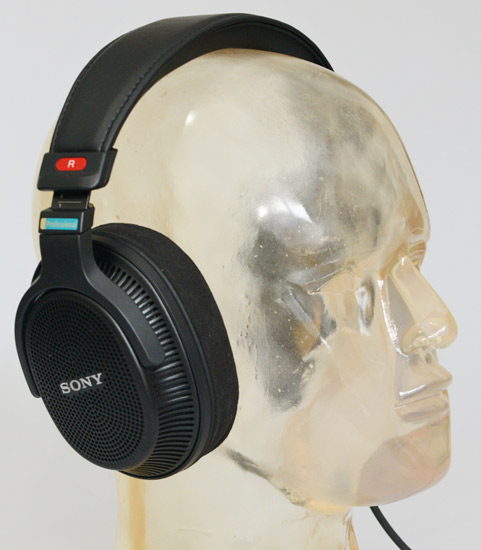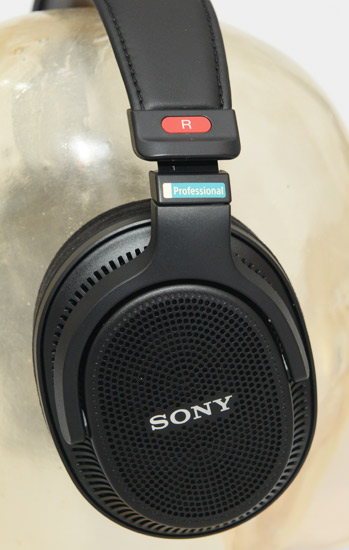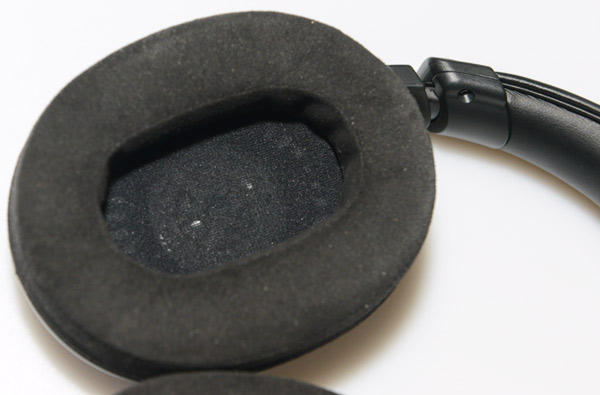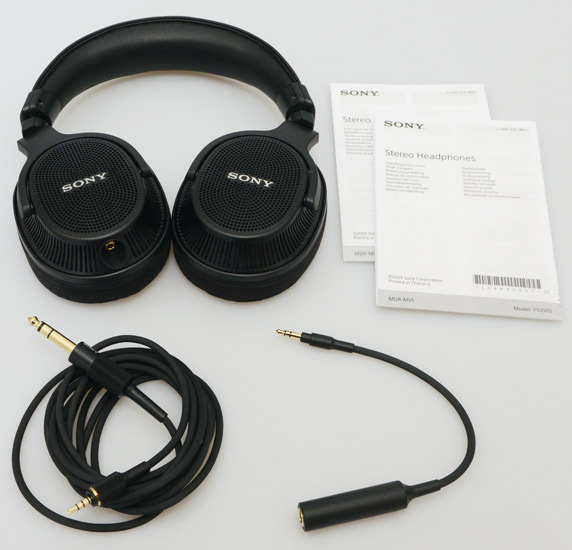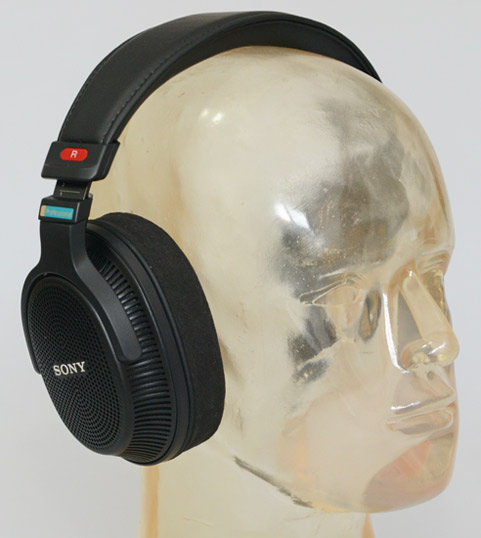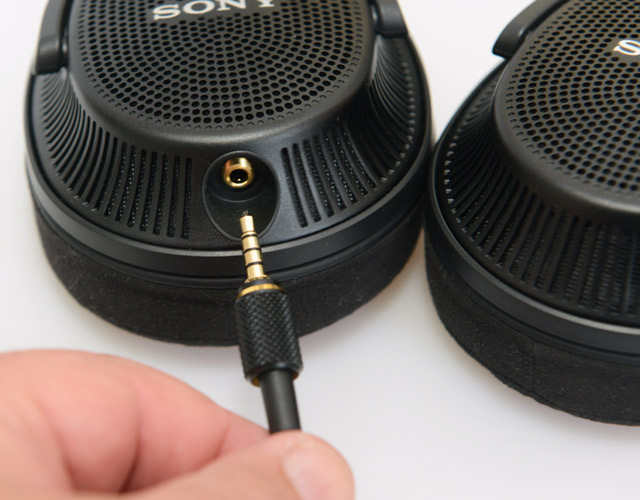Sony MDR-MV1
Open studio headphones with dynamic driver
Author and photos: Peter Kaminski
In April 2023, Sony introduced its new MDR-MV1 studio headphones. Sony has a long history of manufacturing headphones, so it's interesting to take a closer look at these headphones designed for professional users.
Concept and technology
The MDR-MV1 is an acoustically open headphone with a 40mm diameter dynamic driver (neodymium magnet material) that has an impedance of only 24 ohms (@ 1 kHz). Low-impedance headphones have become a trend in recent years. The maximum permissible power is (according to IEC) 1.5 watts.
The manufacturer specifies a frequency range of 5 Hz to 80 kHz and a sensitivity of 100 dB SPL/mW. The circumaural headphones use a breathable ear cushion. It is made of textile, not plastic. The headphones can of course also be replaced.
The headband can be extended up to 40mm on each side. This is enough for even large heads. A scale is embossed on the inner headband so that you can quickly find your desired setting, and the left and right sides are also marked with letters and the colors red and blue. The headphones weigh 223 grams without the cable.
Scope of delivery
Incidentally, the headphones are delivered in a package made entirely without plastic, wrapped in cardboard and paper. In this day and age, this can be mentioned as a feature. In addition to the headphones, a 2.5-meter high-quality connection cable, a cable adapter from 6.3 to 3.5mm TRS plug, and corresponding quick guides in different languages are included in the scope of delivery.
Practice
Mechanically and acoustically, the headphones are built very openly. Not only is the cover perforated, but the side panels are also slotted (see figure above). The ear cup feels very soft and fits the ear very generously, so there is no feeling of tightness. Thanks to the breathable textile used, you won't break a sweat, even in a hot studio – at least not because of the headphones. The wearing comfort can be described as very pleasant. The headband cushion is continuous and not divided into segments. Even long periods of work do not cause the user any problems. The low weight of headphones in this class also contributes to this.
The socket has a four-pole design. This means that the headphones are also designed for use with a headphone amplifier with a balanced output – provided that a suitable cable is used. The assignment of the 3.5mm jack plug is as follows:
- T: L+
- R: R+
- R: R-
- S: L-
The included cable is designed for use with an unbalanced headphone amplifier. It is also worth mentioning that the 3.5mm plug is equipped with a collar using an internal thread, allowing it to be screwed and locked to the socket with the external thread.
We conducted the tests with an SPL Phonitor 2 in unbalanced mode and with a Lake People G108 in balanced mode using the appropriate cable. In addition, we also used all the headphones mentioned here in the studio as a reference during the test, and we also conducted a listening comparison with several test headphones. It should also be noted that in balanced mode, the last of the quality features can be brought out of the headphones.
First of all, something technical: The MDR-MV1 is, in a positive sense, very sensitive and, therefore, loud. In perceptiont, it is even about 3dB louder than an Austrian Audio Hi-X65 at the same input level. It can therefore be connected without hesitation to less powerful headphone amplifiers, such as a keyboard, a mobile device, or cell phone.
Headphones have an extremely wide sound range. You usually only notice this when you have the opportunity to compare many different headphone models at the same time. Many headphones that are currently enteing the market have a corresponding energy in the highs, even if the frequency range is flat in terms of measurement. This also has a lot to do with the dynamic behavior. Examples of these many models include the Austrian Audio Hi-X65, Neumann NDH 30, and the Audeze LCD-2.
However, I would describe the sound character of the MDR-MV1 as more classic, like that of the AKG K702, although it reproduces a lot of energy in the bass range, down to very low frequencies. The mids and highs are very balanced and linear. Transients are played back accordingly, which is not surprising given a frequency range of up to 80kHz, since this also means that the driver has a correspondingly short response time. However, the transients are not overemphasized either.
When mixing and mastering, care should be taken not to take away too much bass and not to add too much gain in the treble range, compared to other headphones. I certainly don't want to imply that the headphones don't offer enough treble. The treble is somewhat softer. Sub-basses are transmitted with a lot of punch and sound very round. Bass reproduction is one of the headphones' strengths. What is striking is that the localization of sound sources works very well, and the headphones also represent binaural signals very well. In addition, they offer a high degree of speaker compatibility in terms of sound. This is partly due to the bass reproduction.
Conclusion
The price for the Sony MDR-MV1 is about 475 Euros. This puts the studio headphones in the upper range of the mid-priced headphones. If you are looking for a smooth and linear sound with a lot of potential in the bass range, then the MDR-MV1 is certainly for you. But the headphones should not only appeal to producers but also to listeners of classical music productions.
 How to resolve AdBlock issue?
How to resolve AdBlock issue? 